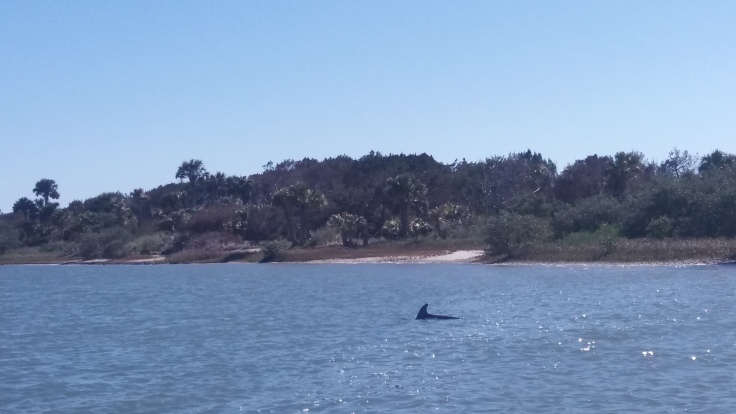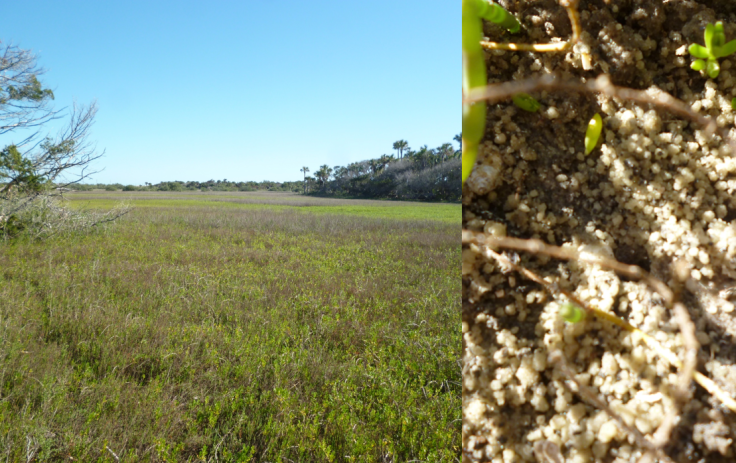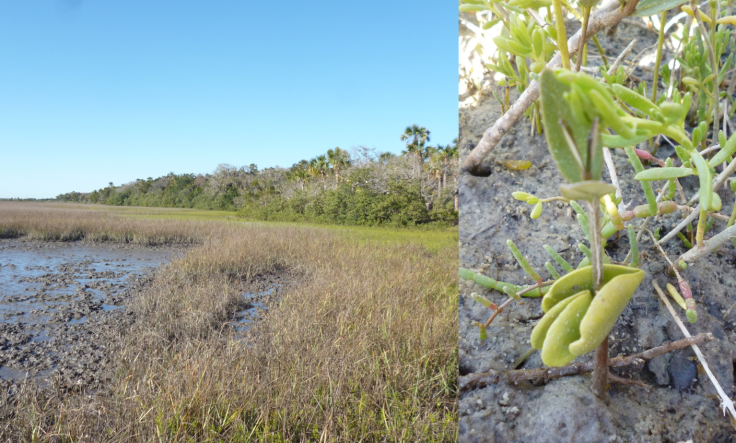After a seven-hour drive north, we arrived at the Whitney Labs, near St Augustine. Here we met Tod Osbourne from the University of Florida and Kim Ponzio who is a past president of the Society of Wetland Scientists. After we had settled in to our rooms, we all jumped into two boats. Not long after leaving the dock, we encountered a pod of Atlantic Bottlenose Dolphins (Tursiops truncatus).

We headed north and pulled up on an island. Tod explained how it was originally a sand dune but due to succession it had now been forested over. The island had been completely washed over during hurricanes and so the plant species that survive there are specially adapted to deal with wind, saline and fire stresses. For example: The Southern Live Oak (Quercus virginiana) twists its fibres as it grows to make it extremely strong and resistant to hurricanes.
Tree islands in Florida are often regulated by fire. Fire causes disturbance and therefore resets succession enabling the ecosystem to support a greater range of habitat and species biodiversity. The ash from burning vegetation can be carried by the wind and fertilise other habitats as it is an external source of Phosphorus, a limiting element in the Everglades and Florida. Whilst most plants are highly flammable, allowing for the fire to pass through an area quickly, the Carolina Willow (Salix caroliniana) doesn’t burn due to its high water content. As it cannot be managed by controlled burning it is an invasive species in Florida.
The other side of the forest opened out into a dune meadow. Even in Florida, dunes have naturally higher and lower elevations. Due to evaporation, the higher elevations are more saline and in certain areas plants cannot tolerate the stress, leaving the ground bare.

Fiddler crabs can be found digging in the topsoil and these burrows transfer oxygen into the soils. As they excavate the sand they create small balls. The larger balls are just soil removed from their burrows, but smaller ones have been filtered through for food.
The salt marsh can be seen in the picture below. Smooth cordgrass and glasswort are the main two plant species we saw in the marsh; however, mangroves are slowly encroaching. Propagules are washed onto the site during storm events and germinate around the edge of the marsh and on the banks of the riverine creeks. Historically, frost had regulated mangrove growth in the north of Florida as they cannot tolerate freezing conditions. However, over recent decades, warmer temperatures have reduced the occurrences of frost events and therefore allowing the growth of mangroves.

The encroaching mangroves alter the vegetation, food web and hydrology of the saltmarsh ecosystem. Mangroves are protected in Florida, and they cannot be removed or trimmed without a licence to do so, therefore posing a controversial issue when it comes to saltmarsh management. As mangroves are better at carbon sequestration and coastal protection, is it better to allow succession and let saltmarshes become mangrove ecosystem?

Leave a comment